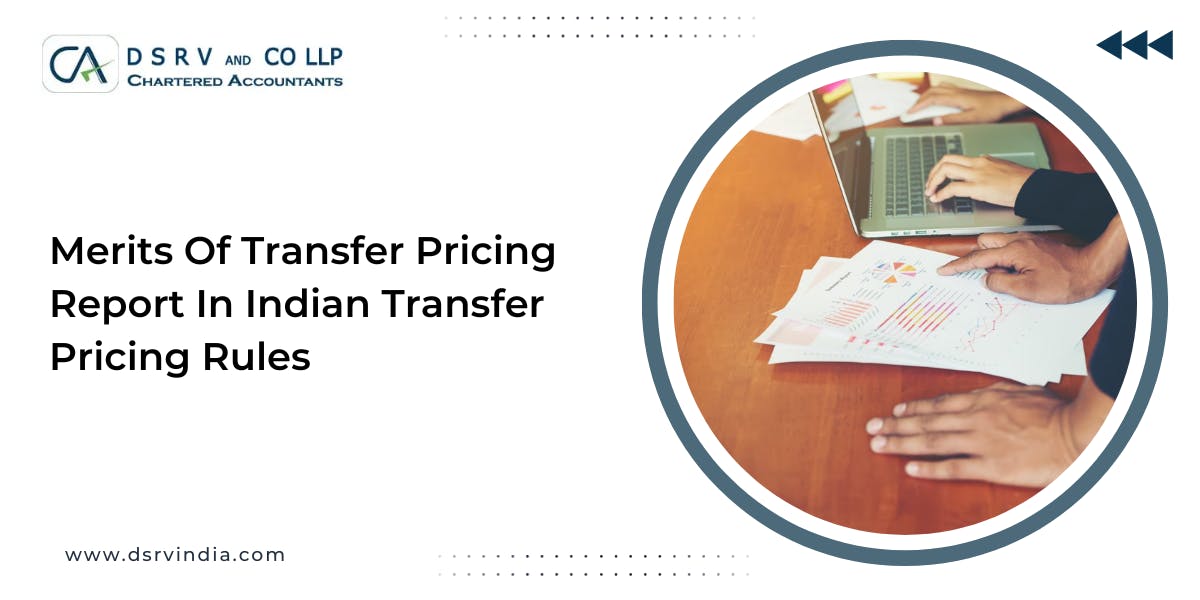MERITS OF TRANSFER PRICING REPORT IN INDIAN TRANSFER PRICING RULES
Want to know the rules of transfer pricing policies in Indian standards? Read our blog about transfer pricing documentation in India to get an idea.
Want to know the rules of transfer pricing policies in Indian standards? Read our blog about transfer pricing documentation in India to get an idea.

An estimate shows that 60% of the global transactions are amongst the related parties in value terms. That means every second transactions in global trade is covered under Transfer Pricing study report regulations. In view of digitalisation of tax administration, faceless interactions of tax payers and tax services administration in India and automatic exchange of information in place between tax jurisdictions, the significance of Transfer Pricing documentation in Transfer Pricing regulations is to be well understood by taxpayers. Let us understand some key intricacies of Transfer Pricing documentation in India.
Three-tiered documentation system is presently prescribed by Indian Transfer Pricing Regulations based on the recommendation by Organization for Economic Co-operation and Development (OECD), BUSINESS EROSION AND PROFIT SHIFTING Action Plan-13 as per Section-92D and Section-286 of INCOME TAX ACT along with Rule-10D, Rule-10DA and Rule-10DB of ITRs.
It is intended to provide a global financial snapshot of allocation of the group’s Revenue, profit and taxes amongst various tax jurisdictions in which group is operating. Rule-10DB prescribed detailed information to be furnished in Form: 3CEAC or/and Form: 3CEAD as per the conditions and manner prescribed in this Rule.
It is intended to provide detailed qualitative information about the group with key value drivers, supply chain of key products and services, intangible within the group, Transfer Pricing policy towards intangibles and financing transactions. Rule-10DA prescribed detailed information to be furnished in Form: 3CEAA or/and Form: 3CEAB as per the conditions and manner provided in this rule.
It is intended to provide detailed information about the local entity, its intraday-group transactions, the functional analysis etc. to determine Arm Length Price by local tax administration. Rule: 10D prescribed quite exhaustive information and documentation to be kept by the taxpayer where the aggregate value of international transactions exceeds ₹ 1 crore during the relevant previous year.
Recommended: Explore Why Your Business Needs A Transfer Pricing Study
Three main objective of Transfer Pricing documentation:
Rule-10D(1) provides list of information and documents from clause (a) to (m) which are summarised as under:
Here are the various penalty provisions for non-compliances of maintaining documents and reporting of international transactions:
Transfer Pricing regulations not only provides for robust system of maintaining and reporting of information and documents for international transactions between the associated enterprises but also mind-boggling penalties for not maintaining or incorrect maintaining the prescribed information and documents.
Note: Where ever section is used, it is with reference to Income Tax Act unless otherwise mentioned.
(Disclaimer: This content is meant for our clients or professional friends only for stimulating discussion on the subject matter not to frame any commercial opinion. All efforts are made to compile correctly with no guarantee of extreme accuracy)
Please feel free to write on sanjay@dsrvindia.com or contact at: +91 9810116321
Facing GST registration rejection? Discover rejection reasons and resolve GST registration issues. Ensure a smooth application process in 2026.
Dispute Resolution Panel (DRP) in Income Tax: Learn about alternative dispute resolution mechanism for income tax disputes and transfer pricing litigation.
Build a strong transfer pricing defense file. Ensure compliance and avoid tax disputes with crucial transfer pricing documentation and audit readiness.
